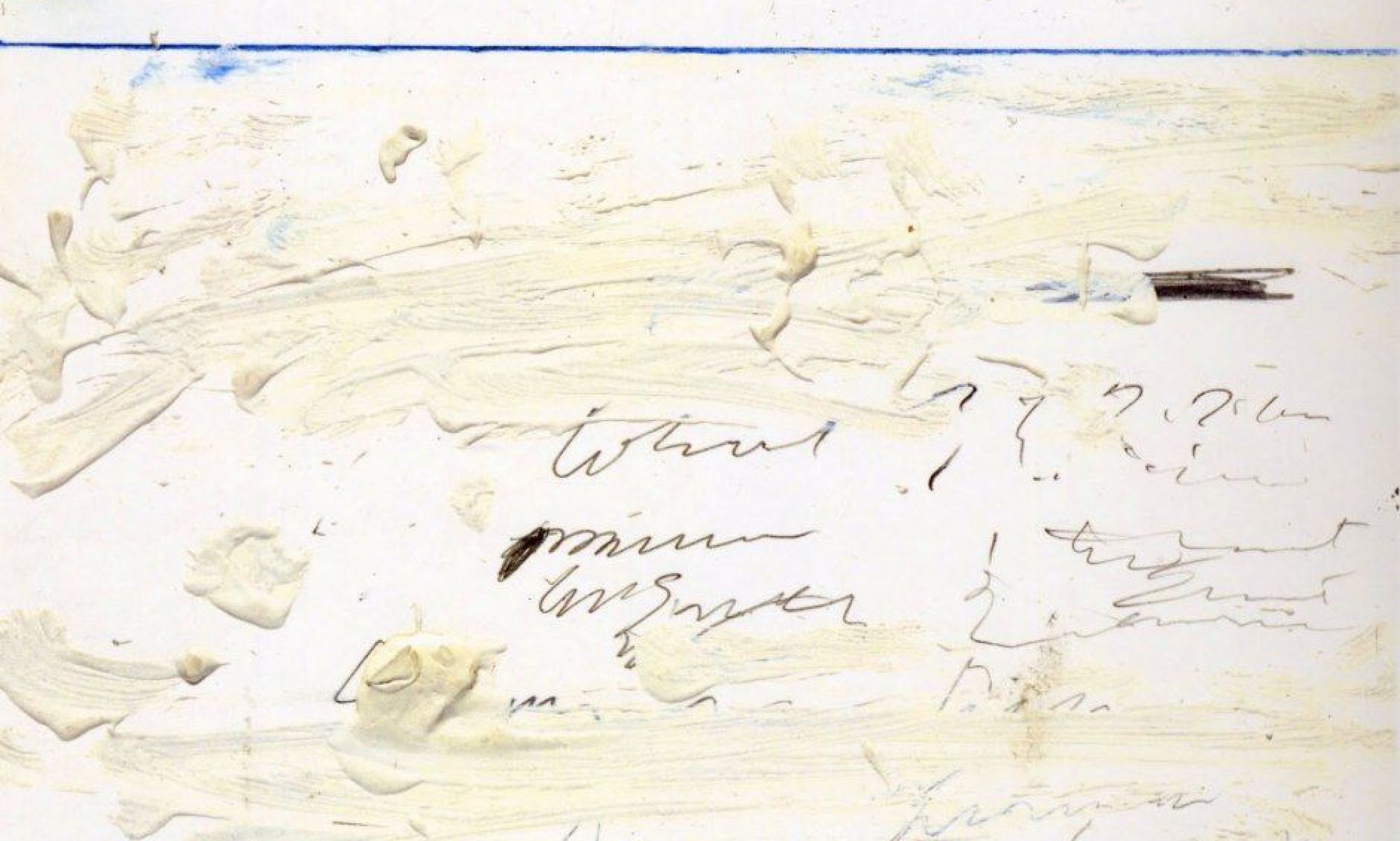Some interesting metaphors emerged from the discussion of the exercises, I thought. How might a poem be lit, for example?—darkly or brightly (as conditions of understanding? of mood?), or differently across its length, a spotlight falling here, a shadow there. A number of exercises raised really interesting questions about vantage and perspective, for example in relation to Stevens’ “Of the Surface of Things,” in Avaneque’s rendering and others’ (John did that poem, too). I have not been attentive to the relation between first and third person in Stevens, but what Avaneque did—looking in on the room, then following the cloaked singer—made that question unavoidable, and rich. In a similar way, the straight-on vantage of the camera in Cammie’s “Diva.” If that is a version of “The Idea of Order at Key West,” now we have to do some thinking about the female singer in the poem—who makes her up, as it were (imagination, cosmetics), and whether she can see herself being seen; whether this is her show or the filmmaker’s or someone else’s. These films are interpretations of the poems and just as much, provokers of interpretation in juxtaposition with their originals.
It was interesting to read Lynne’s poems as though they were little films, or shaped by a filmmaker’s mind and eye. The simultaneous montage of 1962, for example. Did the veering from the hospital bed, to the University of Mississippi, to orbit, to the kitchen table, exploit a particular freedom of film to cut effortlessly from scene to scene and to juxtapose the simultaneous? Other poems seem to make use of techniques such as close-up and the distant, establishing shot. Do stanzas (which always have an architectural sense: stanza in Italian means “room”) also correspond to shots? And what is the equivalent of a shot in a poem—an image? A vantage? (Back to photography and our questions there of point of view.) We spent too little time with her films, but “Starfish Aorta Colossus” returned us to questions of the horizontal and the vertical raised last week by Maya Deren. The juxtaposition of images in the Regular 8 frames again and again posed questions of juxtaposition that were recalcitrant to any narrative construction—image and image and word and sound, connected by a syntax that the viewer must derive from the experience itself. (That is, with language, the syntax, the rules of combination, is pre-given; here we had to work that out for ourselves.)
These questions of verticality and horizontality were important to our discussion of some important definitions of poetry on Wednesday. I appreciate everyone’s willingness to spend a session in more rarefied theoretical air than usual. I won’t try to reproduce a detailed discussion, but it may be worth stepping back to identify the three kinds of definitions at stake. Jakobson’s is structural: poetry is poetry because of a formal property, its network of internal relations (the repetitions of rhythm, of rhyme, of sound, but also of image and idea). Fish’s is pragmatic: poetry is poetry because we say it is, and because we can interpret it, and derive meaning. Selena nicely captured the doubleness of our response to Fish’s position, disappointment that poetry might come down to that, delight that we interpreters might make almost anything into a poem by finding meaning, and beauty, there. We had an interesting discussion of whether these two approaches could be reconciled. One emphasizes the object (the structured poem), the other the subject (the interpreting reader), but we did see some possibility for conversation (Fish’s interpreter might apply Jakobson’s scheme, and Jakobson might understand the prominence of the poetic function to be a provocation to Fish’s reader). Finally we turned to Moten, and his claim that “black thought, which is to say black social life, remains a fruitful site for inhabiting and soliciting the human differential within the general ecology.” We wrestled with the difficulty of an essay that ends by declaring “This is blackness and poetry”—with its use of sound and other verbal patterns, what Jakobson would call the “poetic function” was much more prominent than in the other two. With Cammie’s help, though, we came to see some of the force of Moten’s characterization of art in general, and poetry in particular, not only as “improvisation’s continual breaking and making of the rule of art,” but as an expression of a “common social underground capacity for…representation.” That is, poetry, in its formal containedness (and no one expresses that better than Jakobson), aspires to define a boundary with social life, to stand outside it, as a distillation or a comment or a refuge or a transcendent alternative. But Moten insists that we understand that difference as never complete, never fully successful—we have to read for the community, the sociability, that comes before and after the poem and runs all the way through it, whether the poem embraces that company or tries to refuse it. That’s a deep question to pose to all the speakers and selves we encounter in lyric. It is a gift of Black thought, he teaches us, to pose it.
